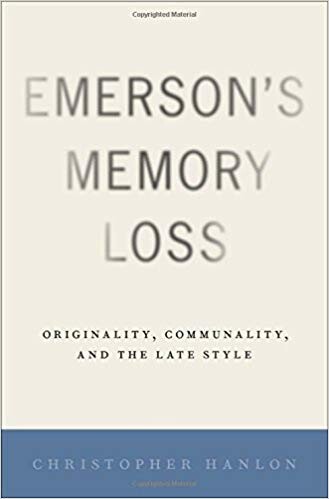Emerson's Memory Loss
Subtitle
Originality, Communality, and the Late Style
Ralph Waldo Emerson's dementia, an ordeal that marked his final two decades, has never been a secret among those who study Emerson's life. Still, few have focused on the period of Emerson's decline. Thus, his later thinking has succumbed to a process of critical forgetting too often ignored by scholars if not excluded from his oeuvre altogether. And yet Emerson's late output, composed as his patterns of cognition transformed profoundly, stages a reconsideration of interests that had preoccupied him for decades: the continuum of human thought and the rest of nature, the bearing of the individual toward the collective, the mind's relationship with the body.
"Emerson's Memory Loss" presents an archive of texts documenting Emerson's intellectual, affective and associative states during his late phase, along with the varying forms of shared connection from which these works emerge. It is also about the way such texts connect Emerson with a stream of thought in America, coursing through the works of other 19th-century writers and thinkers adjacent to Emerson, that emphasizes the aggregate over the singular, the social over the solipsistic, the engaged over the distant, and the many over the one. Hanlon attends to manuscripts and publications marking Emerson's collaborations with others which Emerson himself articulated as his most important work-texts written even as his ability to do so independently waned. Hanlon measures its resonance across broader strains of U.S. culture familiar to Margaret Fuller, Herman Melville, Walt Whitman and more.
Bio
Christopher Hanlon is a professor in the School of Humanities, Arts and Cultural Studies in the New College of Interdisciplinary Arts and Sciences. Hanlon researches and teaches courses in 19th century transatlantic and U.S. literature.
Praise for this book
Hanlon's central, shrewd move is to linger over later works in which Emerson's words were organized, revised, and recomposed by his literary executor and his daughter Ellen Tucker Emerson. Hanlon reclaims these "intrusions" as a form of collaborative authorship — a manifestation of Emerson's evolving interest in intersubjectivity and connection with "other minds." ... Nothing if not timely, Hanlon's study of an unfamiliar Emerson attests to the value of "actively transformative forms of remembrance." Summing Up: Essential.
J. Rissinger, Choice The Ohio State University
I am convinced and delighted by Hanlon's argument for recognizing "Ellen's crucial place in Emerson's intellectual biography." Rather than ignoring those later "texts that would blur the limits of her voice and his," Hanlon scrutinizes them and credits Ellen with emphasizing a "communitarian, cooperative account of intellectual life." In the later work, Hanlon shows, daughter and father "found their own ways of negotiating the interstices of society and solitude as they theorized together the terms of their collaboration.
Dominic Mastroianni, American Literary History Clemson University
